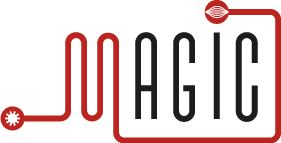Meet Dr. Cinzia Silvestri from BIOND Solutions
Each month, we gather partners from the MAGIC project to discuss aspects in relation to gene therapies. Readers will learn who the people behind the MAGIC Project are, why we are committed to advancing gene therapies, and how our roles in MAGIC are crucial for achieving better health outcomes for people living with muscular dystrophies. This time, we are speaking with Dr. Cinzia Silvestri from BIOND Solutions.
In brief words, please let us know who you are individually and on behalf of which project partner organization.
I’m Dr. Cinzia Silvestri, CEO and founder of BIOND Solutions (Bi/ond), a dynamic SME based in Delft, the Netherlands. Our company is a proud spin-off of the prestigious Delft University of Technology. With over 15 years of combined expertise in microelectronics and 3D tissue biology, we’ve developed a cutting-edge semiconductor chip that enables the growth and analysis of human tissue in vitro. This groundbreaking technology provides research institutes and pharmaceutical companies with human-like data, empowering them to test drug candidates before they enter clinical trials.
What truly sets Bi/ond apart is our unique fusion of over 20 years of experience in semiconductor microfabrication and tissue biology. Together with my co-founder and CTO, Dr. Nikolas Gaio, we lead a talented team of 11 professionals based in Delft. Our team is a balanced mix of 50% engineers and 50% biologists, creating a collaborative environment where advanced engineering meets the complexities of biology.
At Bi/ond, our mission is to develop more inclusive and precise drugs for all by combining advanced engineering and cutting-edge biology, ultimately improving human health with better treatments.
Why are you participating in the MAGIC project? How can your perspectives complement the MAGIC project goal to accelerate the development of genetic therapies for muscular dystrophies?
We are participating in the MAGIC project to develop advanced, human-like muscle models that more accurately represent some of the characteristics of patients affected by various types of muscular dystrophies. Our role is to empower consortium partners by providing a robust technological platform and our expertise in muscle-on-chip models.
The models we are developing in collaboration with our partners in Work Package 1 will play a key role in testing the viral vectors and gene-editing strategies developed by other members of the consortium. These models are crucial for evaluating the effectiveness of genetic therapies, ultimately helping to accelerate their development and future clinical application.
What have been the current challenges regarding the development of genetic therapies for muscular dystrophies for you?
Genetic therapies and genome editing strategies hold great potential for treating conditions like muscular dystrophies and other neuromuscular disorders, offering hope to patients and their families. However, one of the major challenges is the need for innovative in vitro models that better replicate human-specific conditions. Traditional models, such as petri dishes and animal models, have limitations in fully capturing the complexity of human diseases and their response to novel therapies (such as the immune system).
By combining human iPSCs (induced pluripotent stem cells) and primary cells with advanced technological platforms like ours, we can uncover and explore disease mechanisms that are difficult to replicate with conventional models. This approach helps bridge the gap between genetic therapies and their real-world applications, advancing the development of effective treatments.
What are the main outcomes (direct results) you expect from the project?
At the end of the project, we expect to develop a unique, reproducible model for Duchenne muscular dystrophy, including microfluidic capabilities for dynamic drug insertion. The model will be designed in such a way that it can be scaled, allowing future partners and external stakeholders to benefit from it. Additionally, we aim to use this as a starting point to replicate the process for other muscular dystrophy models.
What are the expected impacts on your organisation from participating in the project?
By participating in MAGIC, we expect several key impacts on our organization:
- Comprehensive Understanding: We will gain a deeper understanding of what is required to develop every aspect of a treatment, from the early stages to final implementation, by collaborating with various partners in the project.
- Enhanced Team Motivation and Impact: The involvement of patient associations provides invaluable direct feedback on why our innovations are important. This connection helps us understand the real-world impact of our work, gives a face to our efforts, and reinforces the significance of what we do. It also fosters a stronger sense of purpose within our team, aligning us more closely with patient needs and ensuring our solutions have a meaningful, positive impact.
- Scalable Knowledge and Experience: We will gain valuable experience that we can apply to other disease areas, enabling us to adapt and expand our approach to a broader range of conditions.




